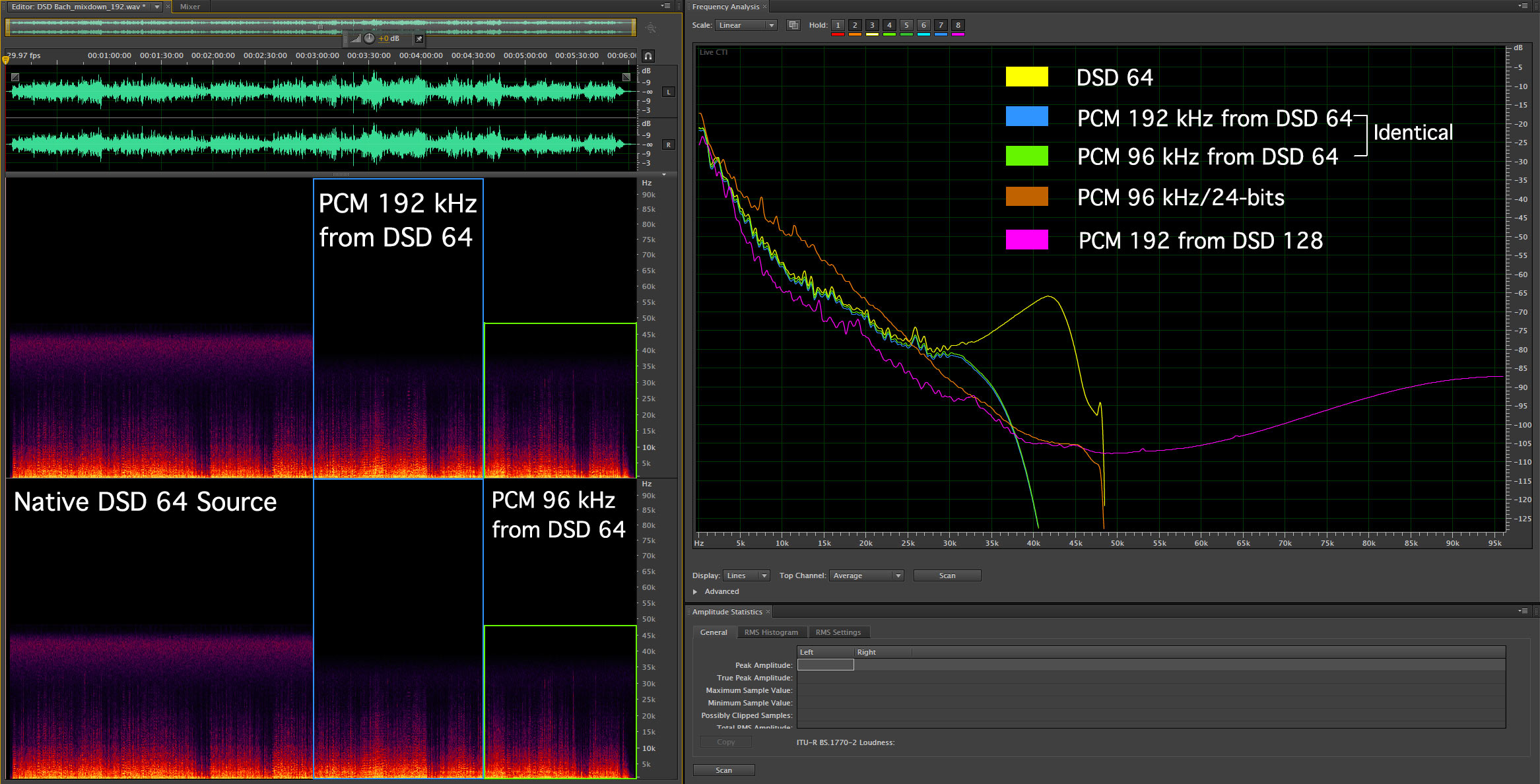When You Get Charged More For The Same Thing
How would you feel if you ordered take out food from a fancy Italian restaurant, ordered their famous “handmade” ravioli with creamy pesto sauce and later found out that it wasn’t what you thought it was? You paid $30 for a gourmet meal only to discover that is was made from prepackaged, off-the-shelf pasta and a sauce that comes from a plastic container…products that can be purchased for less than half of what you paid.
What’s this have to do with a website focused on HD-Audio, you ask? Well, because the exact same thing is happening in the world of so-called HD downloads. Following the presentation by Tom Caulfield of Channel Classics at the Newport Show, I decided to explore their productions and website. The company has been around for long time and has a terrific reputation for their line of classical recordings. I know Dr. David Robinson of Positive Feedback, a long standing advocate of DSD and the SA-CD format, speaks and writes glowingly about their work and website functionality.
I had also viewed the video from company founder and chief engineer at the recent Newport Show (as part of the panel on DSD). Jared Sacks explained his recording setup, which features custom made mixers and preamplifiers, specially designed, one-of-a-kind carbon cables and Dutch-made analog to digital converters. Jared and Tom use a purist approach when miking a classical ensemble and they deliver both surround and stereo mixes on SA-CDs. Channel Classics has been using DSD 64 as their preferred capture format since 2000 when Sony provided them with their new technology.
So I started poking around their website the other day. I located the section of the website that provides their download application and a set of files so that you can test the compatibility of your playback equipment. The zipped file contains four different presentations of Bach’s Concerto for Two Violins BWV 1043 – Largo ma non tanto. It was recorded using DSD 64 (sample rate of 2.8224 MHz). This source DSD file is provided in the zipped downloaded package along with conversions to 192, 96 and 44.1 kHz FLAC PCM files.
I played each file through my new Benchmark DAC2. This is the newest version of their reference standard DAC and includes a very well reviewed native DSD 64 converter. I started by opening the downloaded files in Adobe’s Audition program to generate spectragraphs for each file. Obviously, I couldn’t do this with the native DSD file so I took the output of my Benchmark DAC and captured the converted DSD playback in PCM format at 96 kHz/24-bits. Then I ran the results through Adobe’s Audition to view the spectragraph. The results are in Figure 1 below:
Figure 1 – The spectragraphs of the free downloaded tracks from Channel Classics AND a couple of others for comparison. Click for a large view of this diagram.
So here’s what was surprising to me. If you look closely (I know it’s hard because they are virtually identical and lay over the top of each other) at the blue and green plots on the right-hand side of the chart, you’ll notice that they 192 kHz and 96 kHz conversions of the original DSD 64 file are the same. There is absolutely no difference in dynamic range or frequency response. It is obvious from looking at this chart that the folks at Channel Classics converted the source DSD files to PCM at these “high-resolution” standards and then rolled off the ultrasonics. Why would they do that? Because there is nothing but “purple haze” or noise in the ultrasonic range of the resultant conversions! Look at the yellow line on the chart AND the associated DSD 64 area of the spectragraph. The noise starts at about 30 kHz and just gets worse as you move into the higher frequency range. That’s where the yellow line starts moving up instead of continuing down, as we would expect. I would hope that no one wants that uncorrelated noise in their outputs.
So you pay $4 more for the 192 kHz version than the 96 kHz version and get exactly the same thing. I just don’t get it. If we want people to appreciate the benefits of better recordings and formats, why are some companies (Channel Classics is not alone in misrepresenting “so-called” HD tracks) deliberating manipulating their products.
The brown line is one of my 96 kHz/24-bit recordings. It exhibits the “correct” behavior as it moves higher until the Nyquist frequency of 48 kHz comes into play. The AIX track actually contains more high-end frequencies or ultrasonics than the 192 kHz PCM file that was converted from DSD 64!
Finally, the purple line on the plot is taken from a DSD 128 file (the latest thing in the push for the return of DSD). It shows the noise rising (as it always will) just about 48 kHz. Again the fidelity of a 96 kHz/24-bit PCM recording is at least equal to a DSD 128 recording.
So I already know what the DSD advocates will say. The ultrasonics don’t matter because you can’t hear them. Channel Classics was correct in rolling them off. As far as I’m concerned there’s something about the integrity of the whole situation that should matter. What do you think? Would you feel ripped off if you downloaded a 192 kHz/24-bit file and discovered that it was the same as a cheaper version?



Hi Mark,
I am not sure what represents the yellow line titled “Native DSD 64 source” in your graph. Is is the output analog of the Benchmark DAC2 recaptured in 96/24 ? In that case, kind of strange “native DSD” no ? If I don’t mistaken the Benchmark is also applying an analog low pass filter when converting DSD to analog, albeit different from what the one Channel Classics is using to convert their DSD source to 96/24 and 192/24.
Nonetheless I do agree that the spectrogram doesn’t sell the 192/24 versus the 96/24 version (although I would have preferred 88.2 kHz or 176.4 kHz with are even divider of 2.8824 Mhz).
And then may be a silly comment : what if the sonic beauty revered by the SACD/DSD camp would come from this “purple haze” which would give the analog sonic character to the DSD sound ?
Yes, the “native DSD” plot line is the output of the Benchmark captured in PCM 96/24 so that I could get the spectragraph. It’s true that ALL DSD conversion has a LPF with a corner frequency of 50 kHz. But as you can see from the graph, the music actually stops at around 30 kHz and the the noise rises.
I often thought about whether the HD noise is something that gives the “analog” quality to DSD. Obviously, there are number of people that believe it’s terrific. But I think having a whole bunch of uncorrelated noise in the ultrasonic range is detrimental and doesn’t represent the acoustic reality of the world.
I even spoke to a guy at the Newport Show that said his hig-end amplifier shut down when it detected the noise. I can’t rationalize how it can be construed as a good thing.